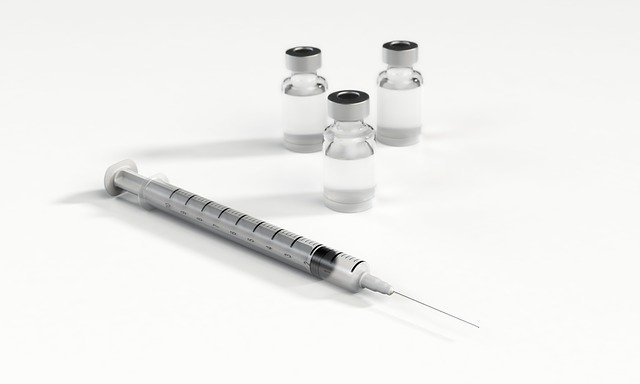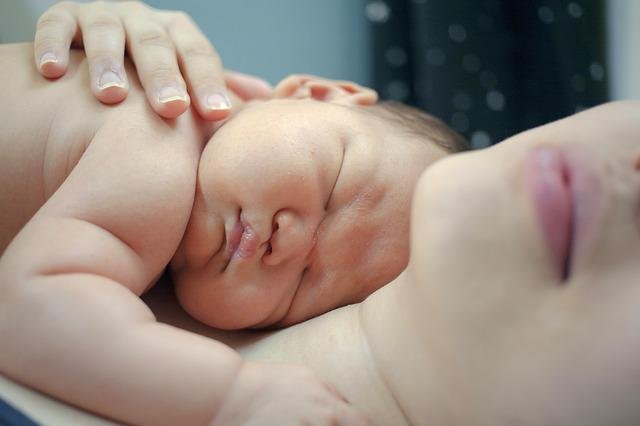
“ESPAÑOL”

Hola querida y apreciada comunidad de #motherhood, un saludo para todos los lectores deseándoles siempre que la paz y la tranquilidad reine en sus corazones y en los de sus familiares y que el amor y la paz reine en sus relaciones de padre e hijos.
Durante un embarazo son muchas las situaciones de riesgos que se pueden presentar y la idea no es vivir en constante alarma, es por eso la importancia de un adecuado control prenatal con un especialista ya sea un obstetra o un perinatólogo (especialista en embarazo de altos riesgos), para poder aclarar nuestras dudas y recibir las correctas recomendaciones para que todo marche de la mejor manera posible , ya que estamos gestando vida.
Cuando Salí embarazada por primera vez, uno de los primeros exámenes que la obstetra me mandó a realizar fue el de un tipeaje sanguíneo, para poder determinar qué tipo de sangre era y que factor.

Cada uno de los seres humanos tenemos un tipo de sangre (A, B, O, AB) y un factor ( negativo o positivo ), en mi caso particular esa prueba tan importante durante el embarazo a pesar de habérmelo hecho en un “buen” laboratorio, me dieron un resultado errado , ya que recuerdo que me entregaron un papel que decía que yo era A+. Como eso no significaba mayor riesgo, porque era positivo, continué con mi embarazo de la mejor manera, hasta que por fin nació sana y hermosa mi hija Virginia @virgi2001.
6 años después cuando vuelvo a estar en gestación de mi hijo Guillermo me cambio de obstetra, ya que mi médico anterior se había mudado de ciudad, y aunque en las primeras consultas yo le había manifestado que era A+ me pide que me repitiera el tipeaje, ya que la hoja del resultado lo había perdido y el debía colocarlo en la historia. Mi sorpresa fue que esta vez mi resultado era Orh(-).
En vista de tener un resultado diferente me voy a una hematólogo y efectivamente yo era de ese tipo y de ese factor. Cuando se lo comunico a la Doctora me dice que esa equivocación de mi tipeaje anterior en este nuevo embarazo tenía sus riesgos , ya que al nacer mi bebé Virginia, que fue A+ yo debieron colocarme una vacuna de nombre Rhogan dentro de las 72 horas luego del parto, lo cual ayuda con esa incompatibilidad sanguínea entre madre y feto, ya que contiene inmunoglobulina.

La incompatibilidad sanguínea materno- fetal ocurre en aquellos embarazos donde la gestante tiene el factor negativo en la sangre y su bebé el factor contrario, es decir , positivo. En ese caso el cuerpo de la madre reconoce como extraño ese factor diferente y actúa como autodefensa y “destruye” los glóbulos rojos del feto lo que puede desencadenar en un grave problema para el bebé.
La doctora me explicó que en el primer embarazo no se producía riesgos, sino a partir del segundo, por eso la importancia de la colocación de la vacuna antes mencionada.
Cuando mi hijo Guillermo nació inmediatamente le hacen una hematología y su tipeaje y resultó ser A+ nuevamente y allí me mandan a colocar la vacuna Rhogan, que protege solo para un nuevo embarazo. Mi hijo nació con el valor de su bilirrubina muy elevado, la cual es una de las consecuencias de esta incompatibilidad sanguínea, y por esa razón estuvo 6 días en terapia intensiva neonatal recibiendo fototerapia para bajar su nivel de bullirrubina. La anemia en el bebé es otra de las posibles peligrosas consecuencias.
Este es uno de los exámenes que toda pareja debe tener antes o al momento de concebir para tener un plan de acción. En una madre negativa y padre positivo el futuro bebé va a heredar el factor de alguno de los 2, y esa incompatibilidad ocurre solo cuando la madre es negativo y su bebé es positivo. En caso de que el bebé nazca con un factor negativo igual que el de su madre no hay ningún inconveniente. En caso de que la madre sea positivo y el papá negativo hay igual que hacer el tipeaje en el recién nacido porque como dije el factor como dije es hereditario.
Para más información puede leer el siguiente enlace:
Sin embargo se debe recordar que yo estoy relatando desde mi propia experiencia , lo cual no sustituye una consulta médica , así que lo que quiero es que sepamos que debemos estar informadas, hacer las preguntas necesarias y de ser posible confirmar bien el tipeaje en otro laboratorio para estar bien seguros porque la incompatibilidad sanguínea representa riesgos importantes, no para la madre, sino para el feto o bebé.
En mis embarazos posteriores me siguieron colocando la Rhogan, ya que todos mis hijos han sido A+, y en el último en donde me consulto con un perinatologo me la colocó en la semana 28 si más no recuerdo y luego de la cesárea otra dosis.
Amigas y amigos de hive no hay nada mejor durante el embarazo que llevar un adecuado control medico con un especialista y estar siempre alerta a lo que nos dicen en consulta y si es posible antes de ir anoten en un papel las dudas que tenga por muy pequeñas que parezcan y hagan una lista para evitar olvidar alguna. El embarazo es una etapa muy bella pero hay que cuidarse y seguir las recomendaciones , todo por el bienestar de la madre y el bebé que está por nacer.
Gracias a todos por leer esta publicación, nos vemos en otra ocasión para seguir compartiendo temas de maternidad y paternidad.
.

“ENGLISH”


Hello dear and appreciated #motherhood community, greetings to all readers wishing you always peace and tranquility reign in your hearts and in the hearts of your family members and love and peace reign in your parent-child relationships.
During pregnancy there are many risk situations that may arise and the idea is not to live in constant alarm, that is why the importance of proper prenatal care with a specialist either an obstetrician or a perinatologist (specialist in high-risk pregnancy), to clarify our doubts and receive the right recommendations so that everything goes as smoothly as possible, since we are gestating life.
When I became pregnant for the first time, one of the first tests that the obstetrician sent me for was a blood typing, in order to determine what type of blood and what factor it was.
Each human being has a blood type (A, B, O, AB) and a factor (negative or positive). In my particular case, this test, so important during pregnancy, in spite of having it done in a "good" laboratory, gave me a wrong result, since I remember that they gave me a paper that said that I was A+. Since that did not mean that I was at risk, because it was positive, I continued with my pregnancy in the best way, until finally my daughter Virginia @virgi2001 was born healthy and beautiful.

6 years later when I was pregnant again with my son Guillermo I changed obstetrician, since my previous doctor had moved to another city, and although in the first consultations I had told him that it was A+, he asked me to repeat the typing, since the result sheet had been lost and he had to put it in the history. My surprise was that this time my result was Orh(-).
In view of having a different result I went to a hematologist and indeed I was of that type and that factor. When I told the doctor she told me that this mistake of my previous typing in this new pregnancy had its risks, since at the birth of my baby Virginia, who was A+, I should have been given a vaccine called Rhogan within 72 hours after delivery, which helps with this blood incompatibility between mother and fetus, as it contains immunoglobulin.
Maternal-fetal blood incompatibility occurs in those pregnancies where the pregnant woman has the negative factor in her blood and her baby has the opposite factor, i.e., positive. In this case, the mother's body recognizes this different factor as foreign and acts as self-defense and "destroys" the red blood cells of the fetus, which can lead to a serious problem for the baby.
The doctor explained to me that there was no risk in the first pregnancy, but from the second onwards, which is why it is so important to have the aforementioned vaccine.
When my son Guillermo was born, they immediately did a hematology and his typing and it turned out to be A+ again and then they sent me to get the Rhogan vaccine, which protects only for a new pregnancy. My son was born with a very high bilirubin value, which is one of the consequences of this blood incompatibility, and for that reason he spent 6 days in neonatal intensive care receiving phototherapy to lower his level of bilirubin. Anemia in the baby is another of the possible dangerous consequences.
This is one of the tests that every couple should have before or at the time of conception to have a plan of action. In a negative mother and positive father the future baby will inherit the factor from one of the 2, and this incompatibility occurs only when the mother is negative and her baby is positive. In case the baby is born with the same negative factor as the mother, there is no problem. In case the mother is positive and the father is negative, the newborn must be typed because, as I said, the factor is hereditary.
For more information you can read the following link:
Source, however it should be remembered that I am relating from my own experience, which does not replace a medical consultation, so what I want is that we know that we must be informed, ask the necessary questions and if possible confirm the typing well in another laboratory to be sure because blood incompatibility poses significant risks, not for the mother, but for the fetus or baby.
In my subsequent pregnancies I continued to receive the Rhogan, since all my children have been A+, and in the last one where I consulted with a perinatologist I received it in the 28th week if I remember and after the cesarean section another dose.
Friends of hive there is nothing better during pregnancy than to have a proper medical control with a specialist and always be alert to what they tell us in consultation and if possible before you go write down on paper the doubts you have, no matter how small they may seem and make a list to avoid forgetting any of them. Pregnancy is a very beautiful stage but you have to take care of yourself and follow the recommendations, all for the welfare of the mother and the baby that is about to be born.
Thank you all for reading this publication, see you another time to continue sharing topics of motherhood and fatherhood.


Gracias por dedicar un tiempo para leer mi publicación, la escribí con mucho amor.
Thank you for taking the time to read my post, I wrote it a lot of love.
Me despido.
I bid you farewell.

Todo el contenido que se encuentra en esta publicación es de mi autoría, cualquier duda hacer mención a mi persona y con gusto les responderé @surglen.
All the content found in this publication is my authorship, if you have any questions, mention me and I will Gladys answer you @surglen.
Las Fotografías son de mi propiedad, excepto las citadas con su fuente.@surglen
Photographs are my property, except those cited with their source. @surglen.
Avatar realizados en Bitmoji
Los separadores/Separators Aquí/here
